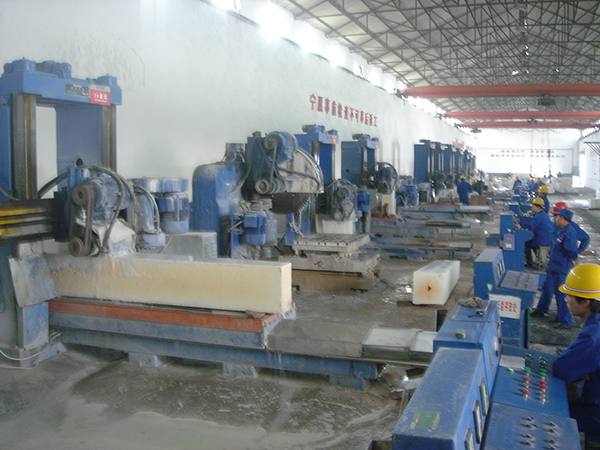Have you considered these factors when buying blast furnace refractory bricks?
Shenyang refractory brick grinder manufacturer Pengcheng Non-metal Company introduced that the furnace throat is located on the top of the blast furnace, the temperature is low, and it can withstand the erosion of blast furnace gas and the impact of human furnace charge. Therefore, the furnace throat protects the upper furnace lining, reasonably distributes the charge and Limit the effect of gas taking away large amounts of ash.
The blast furnace body is longer, and the lower temperature is higher, which mainly plays the role of preheating, heating, reduction and slagging. In order to make the charge go down and preheat smoothly, the furnace body usually has a certain inclination.
The temperature of the furnace waist is 1400 ~ 1600 ℃, the temperature is high, the furnace charge has been partially reduced to radon, the air permeability is poor, the slag erosion is serious, at the same time, the rising airflow under the bottom is severe, and the coke friction is serious, so the furnace lining in this part is seriously damaged.
The furnace belly is connected with the furnace waist and the hearth. In order to adapt to the expansion of the high-temperature furnace gas and the shrinkage of the molten material, it is usually designed to be large and small. At the same time, this part is close to the air outlet, and it will also be washed by high-temperature airflow and slag-iron separation. And the erosion impact of the slag iron dripping process, so this area is the most vulnerable area during the operation of the blast furnace.
The hearth and hearth mainly play the role of burning coke and storing molten iron. The hot air blown in from the tuyere reacts with coke to generate coal gas at this position, and the temperature is as high as 2000 ° C or higher. Therefore, the refractory material temperature in the tuyere area is higher than 1700 ° C; the molten steel in the hearth is regularly discharged from the tapping hole, and at the same time The high-speed hot air also blows the molten iron in the hearth, so that the molten iron forms a swirling flow in the hearth, so the hearth refractory will be washed away and eroded by the high-temperature molten iron. The molten iron contained in the bottom of the furnace will penetrate into the refractory. At the same time, the carbon in the molten iron will cause the refractory embrittlement, so the bottom of the furnace is likely to cause foot-like erosion.
The blast furnace lining is surrounded by refractory materials into a blast furnace type. The interior of the blast furnace is a circular working space. The size of the blast furnace is expressed in cubic meters of effective volume. The blast furnace lining is protected by a cooling device in the harsh conditions, so that the working age of a generation of furnace can be as long as 15 years or more.
There are many factors that affect the life of a blast furnace, and the degree of damage to the lining is the fundamental factor. Practice has shown that the life of the furnace lining varies with the smelting conditions. The furnace belly, the furnace waist and the lower part of the furnace are the most severely eroded parts of the blast furnace lining, especially the furnace waist and the lower part of the furnace where it is difficult to form a protective layer, which has now become the weakest link of the blast furnace lining. The throat of the furnace is mainly affected by the friction of solid charge and the blast furnace gas flow entrained by the dust, as well as the rapid change in temperature when charging the charge.
In general, refractory materials for blast furnaces should meet the following requirements: at high temperatures, they do not soften, melt, soften, or volatilize, and at the same time maintain the integrity of the furnace body under high temperature and high pressure conditions. The thermal shock and the abrasion caused by the falling material and the rising gas must also have chemical stability to the molten iron, slag and furnace gas.
